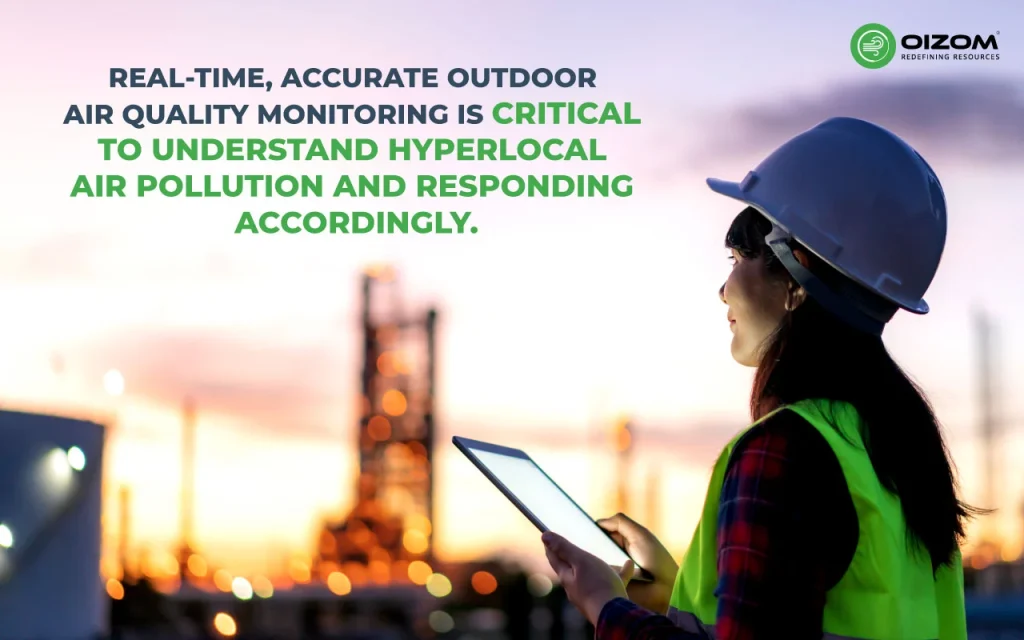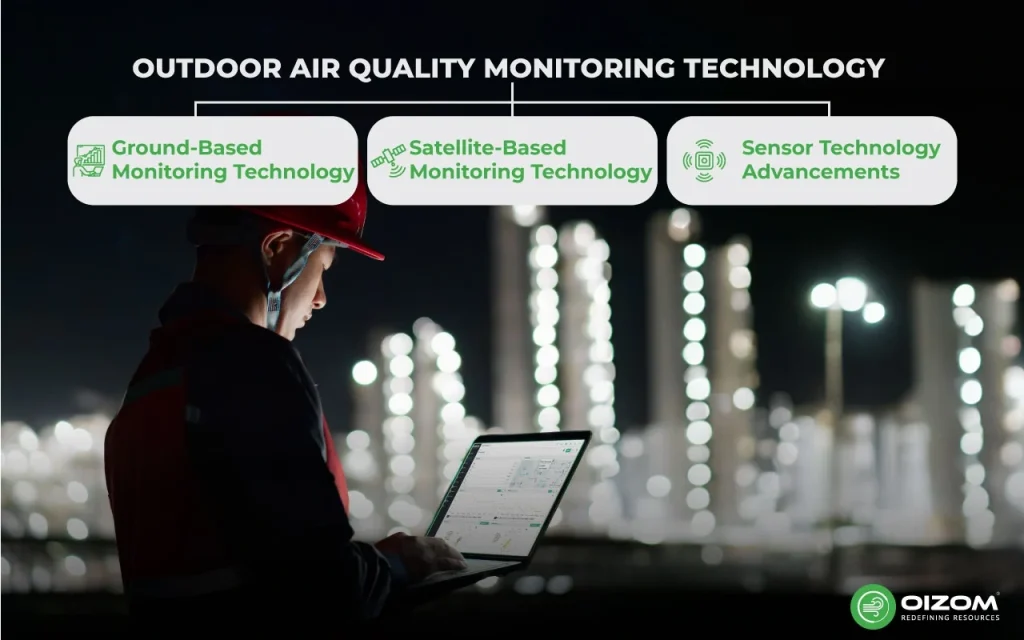Breathing clean air is essential for a long and healthy life. We all understand the importance of clean air, but how do we know when it is pure or polluted? Many of the most dangerous airborne pollutants are difficult to detect with the human eye or nose. How can you tell if your home or city is polluted or not? Fortunately, several technologies and resources are available to ensure your air is pure and healthy.
Bad air quality and pollution seriously affect human health and the environment and have significant economic costs. Thus, achieving cleaner air through better air quality monitoring and management is critical in creating a healthier and more sustainable future. For a better understanding, this blog will discuss several types of air quality monitoring networks, available technologies, and how you can reduce exposure to outdoor air pollution.
Outdoor Air Quality Monitoring Technology
Monitoring outdoor air quality is critical to protecting public health and the environment. Various approaches have been used to assess air pollution concentrations and monitor changes over time. For instance, ground-based monitoring stations, satellite-based monitoring systems, and low-cost sensors exist. Outdoor Air Quality Is Bad, highlighting the need for continuous and diverse monitoring methods to accurately assess and address pollution levels. These technologies, among others, provide real-time, accurate data on air quality, allowing for timely and effective responses to air pollution.

Ground-Based Monitoring Technology
- Government reference-grade air quality monitors, categorized as either federal reference method (FRM) or federal equivalent method (FEM) monitors, represent the scientific standard for air quality monitoring.
- Ground-based air quality monitoring stations are among the most commonly utilized technologies. These stationary units are outfitted with advanced instruments that can detect a variety of pollutants, including particulate matter (PM), nitrogen dioxide (NO2), sulfur dioxide (SO2), carbon monoxide (CO), ozone (O3), and volatile organic compounds (VOCs). These stations, strategically located in urban, industrial, and residential regions, give real-time data on air quality.
- FRM equipment is designed to meet air quality measurement standards developed by regulatory bodies such as the United States Environmental Protection Agency (USEPA).
Satellite-Based Monitoring Systems
- Compared to air quality monitors deployed at ground level, air quality monitoring technology aboard satellites such as OCM-3 Aerosol Optical Depth Product from EOS-6 Satellite from ISRO can also be used to monitor pollution events and trends at a larger scale.
- Satellite remote sensing is another vital tool used for monitoring outdoor air quality. Satellites outfitted with specialized sensors examine the Earth’s atmosphere from space, providing extensive coverage across large geographic areas. They provide excellent insights into the distribution and movement of pollutants, which is especially beneficial for monitoring air quality in remote areas and tracking pollutant transport over long distances.
- By utilizing space research and orbiting satellites, we may gain a detailed picture of the toxins in our atmosphere. These sensors can precisely monitor particle pollution, ground-level ozone, carbon monoxide, and other essential pollutants.
- In many applications, satellite air quality monitoring data is fused with ground-based measurements to lend a “bigger picture” view of air quality.
Sensor Technology Advancements
- In terms of both spatial and temporal resolution, stationary low-cost air quality sensors fall in the middle-ground between traditional and mobile monitoring.
- Low-cost sensors detect levels of certain pollutants, such as particulate matter and nitrogen dioxide, as well as ambient parameters like temperature and humidity. They are a less expensive alternative to ‘reference-grade equipment, ‘which is the standard equipment used in air quality monitoring and is known for its high accuracy.
- This allows low-cost sensors to be deployed in significant numbers to collect high-resolution data. The recent advancements in sensor technology have led to the development of affordable air quality sensors. These small devices can be deployed in large numbers to create dense monitoring networks, offering enhanced spatial coverage and enabling communities to monitor air quality at a more localized level.
- One such instrument is the ‘polludrone device, a cutting-edge technology that uses advanced sensors and data analytics to measure various particle concentrations in the air accurately. This real-time monitoring allows for timely and effective responses to air pollution. It collects air pollution data from specific stationary sources near various sources, providing a comprehensive view of the air quality in a given area.
- With the widespread use of smartphones and other digital devices, citizens are empowered to contribute to air quality monitoring efforts. Crowdsourced data collection platforms, such as apps and online platforms, enable individuals to report observations and measurements. This community-driven data supplements traditional monitoring methods, fostering a sense of collective responsibility in the fight against air pollution.

How to Reduce Exposure to Outdoor Air Pollution
Awareness of air pollution is merely the beginning. By taking proactive steps, you can respond to and prevent rising air pollution levels. Your actions are crucial for decreasing exposure and safeguarding your health, making you active in the battle against air pollution.
Here are some tips to help you decrease your exposure to outdoor air pollution during the day:
- When there is a lot of pollution outside, close your windows and doors.
- Reduce your use of gasoline-powered vehicles and other combustion-engine appliances. Consider purchasing a hybrid, electric, or hydrogen-powered vehicle.
- Limit your essential trips to about once a week to lower your emissions.
- Whenever possible, walk, cycle, or use public transportation.
- Limit your use of gas and electric indoor appliances, and turn them off when not in use.
- When you’re not utilizing lights or electronics, turn them off.
- Switch to solar or other renewable energy sources to power your home.
- Use an air purifier to help minimize indoor air pollutants from outside or interior sources.
- Support Air Quality rules: Advocate for more stringent air quality rules and local, regional, and national policies.
- Support measures that reduce emissions from industrial facilities, power plants, and cars to improve air quality.
- Connect an air quality sensor to indoor HVAC systems so that when high levels of indoor pollutants are detected, HVAC fans are automatically turned on.
- Wear an air pollution mask outside when particulate matter levels are high.
- Stay Informed: Regularly check air quality reports and forecasts from local environmental agencies or reliable online sources. This information can help you plan outdoor activities with lower air pollution levels.
Conclusion
Finally, remember that Air Quality Monitoring and Life Cycle Assessment (LCA) together provide a holistic approach to tackling air pollution’s health impacts and environmental risks. By constructing well-designed air quality monitoring networks, we can accurately gather information about the state of the air and seek to reduce pollution exposure. This is not just about improving air quality; it’s about protecting public health, ensuring compliance with regulations, and supporting research and development. By prioritizing efforts to improve outdoor air quality, we create a healthier environment for everyone, The urgency and significance of this issue cannot be overstated.
FAQs
Sophisticated devices assess outdoor air quality in monitoring stations that continuously track particulate matter, nitrogen dioxide, sulfur dioxide, carbon monoxide, ozone, and volatile organic compounds.
Vehicle emissions, industries, construction sites, and natural sources such as wildfires all impact outdoor air quality. Temperature, humidity, wind speed, and air pressure are all crucial factors.
Portable devices that detect pollutants in real time can measure outdoor air quality. Individuals, researchers, and environmental authorities utilize these devices to monitor air quality in specific areas.






